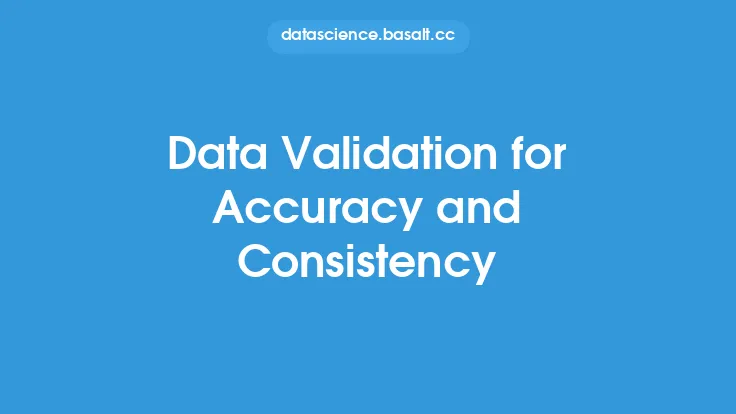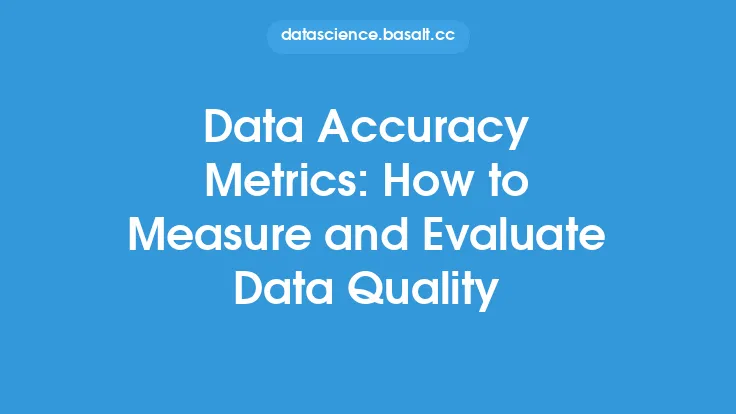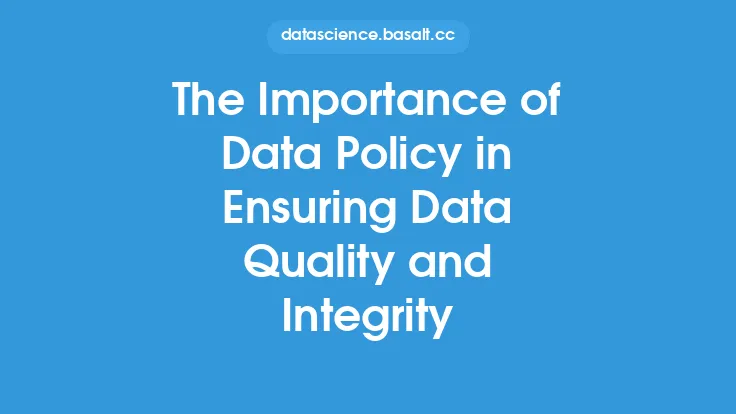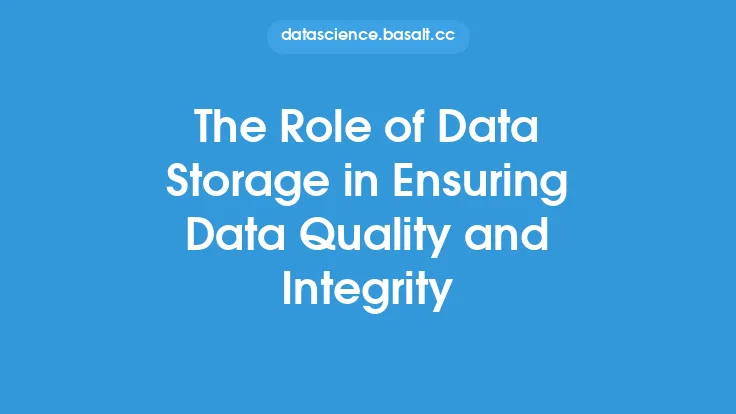Data quality and standards are essential components of effective data governance, as they ensure the accuracy, consistency, and reliability of data within an organization. High-quality data is critical for informed decision-making, strategic planning, and operational efficiency. In this article, we will delve into the importance of data quality and standards, their key characteristics, and the best practices for implementing and maintaining them.
Introduction to Data Quality
Data quality refers to the degree to which data is accurate, complete, consistent, and reliable. It is a critical aspect of data governance, as poor data quality can lead to incorrect insights, flawed decision-making, and decreased operational efficiency. Data quality issues can arise from various sources, including data entry errors, inconsistent data formatting, and lack of standardization. To ensure high data quality, organizations must establish and enforce data standards, which define the rules and guidelines for data collection, storage, and usage.
Characteristics of Data Quality
There are several key characteristics of data quality, including:
- Accuracy: Data should be free from errors and accurately reflect the real-world values it represents.
- Completeness: Data should be comprehensive and include all relevant information.
- Consistency: Data should be formatted and structured consistently across different systems and applications.
- Reliability: Data should be trustworthy and reliable, with a clear understanding of its source, methodology, and limitations.
- Timeliness: Data should be up-to-date and reflect the current state of the business or organization.
- Relevance: Data should be relevant to the business or organization and support its goals and objectives.
Data Standards and Their Importance
Data standards are the rules and guidelines that define how data is collected, stored, and used within an organization. They ensure consistency, accuracy, and reliability of data, which is critical for informed decision-making and strategic planning. Data standards can include data formatting guidelines, data validation rules, and data normalization procedures. They can also define the metadata associated with each data element, such as its definition, source, and usage.
Types of Data Standards
There are several types of data standards, including:
- Syntax standards: Define the format and structure of data, such as date and time formats, numeric formats, and character encoding.
- Semantic standards: Define the meaning and interpretation of data, such as data definitions, data classifications, and data relationships.
- Pragmatic standards: Define the usage and application of data, such as data access controls, data security protocols, and data retention policies.
Implementing Data Quality and Standards
Implementing data quality and standards requires a structured approach that involves several steps, including:
- Data assessment: Identify the current state of data quality and standards within the organization.
- Data standardization: Establish and enforce data standards across different systems and applications.
- Data validation: Implement data validation rules to ensure data accuracy and consistency.
- Data normalization: Normalize data to ensure consistency and reduce data redundancy.
- Data governance: Establish a data governance framework to oversee data quality and standards.
Best Practices for Maintaining Data Quality and Standards
To maintain high data quality and standards, organizations should follow several best practices, including:
- Regular data audits: Perform regular data audits to identify data quality issues and ensure compliance with data standards.
- Data quality metrics: Establish data quality metrics to measure data accuracy, completeness, and consistency.
- Data standardization training: Provide training to employees on data standards and their importance.
- Data governance framework: Establish a data governance framework to oversee data quality and standards.
- Continuous monitoring: Continuously monitor data quality and standards to identify areas for improvement.
Technical Aspects of Data Quality and Standards
From a technical perspective, data quality and standards can be implemented using various tools and technologies, such as:
- Data validation software: Software that checks data for accuracy and consistency against predefined rules and standards.
- Data normalization tools: Tools that normalize data to ensure consistency and reduce data redundancy.
- Data governance platforms: Platforms that oversee data quality and standards, provide data quality metrics, and perform data audits.
- Metadata management systems: Systems that manage metadata associated with each data element, such as its definition, source, and usage.
Conclusion
In conclusion, data quality and standards are critical components of effective data governance, ensuring the accuracy, consistency, and reliability of data within an organization. By understanding the characteristics of data quality, implementing data standards, and following best practices for maintaining data quality and standards, organizations can ensure high-quality data that supports informed decision-making and strategic planning. Additionally, by leveraging technical tools and technologies, organizations can streamline data quality and standards implementation, ensuring a strong foundation for effective data governance.





